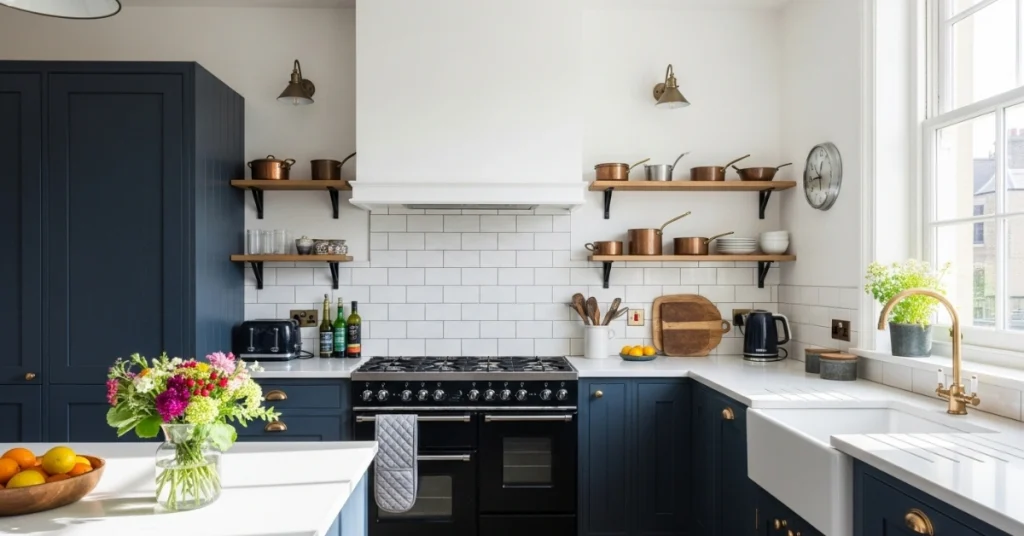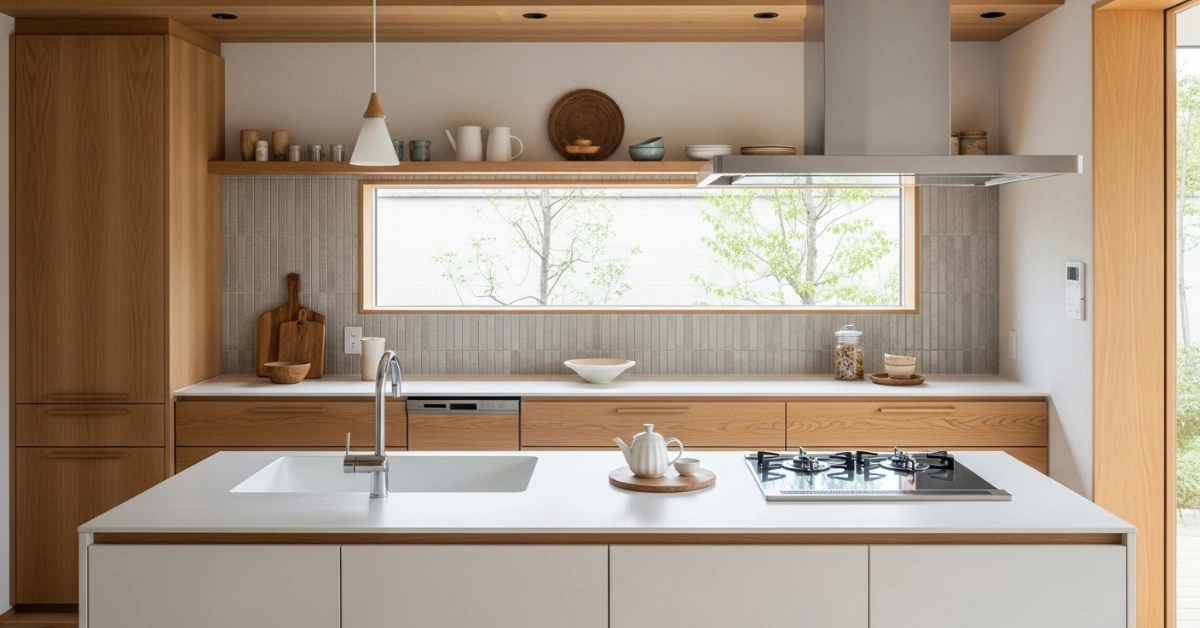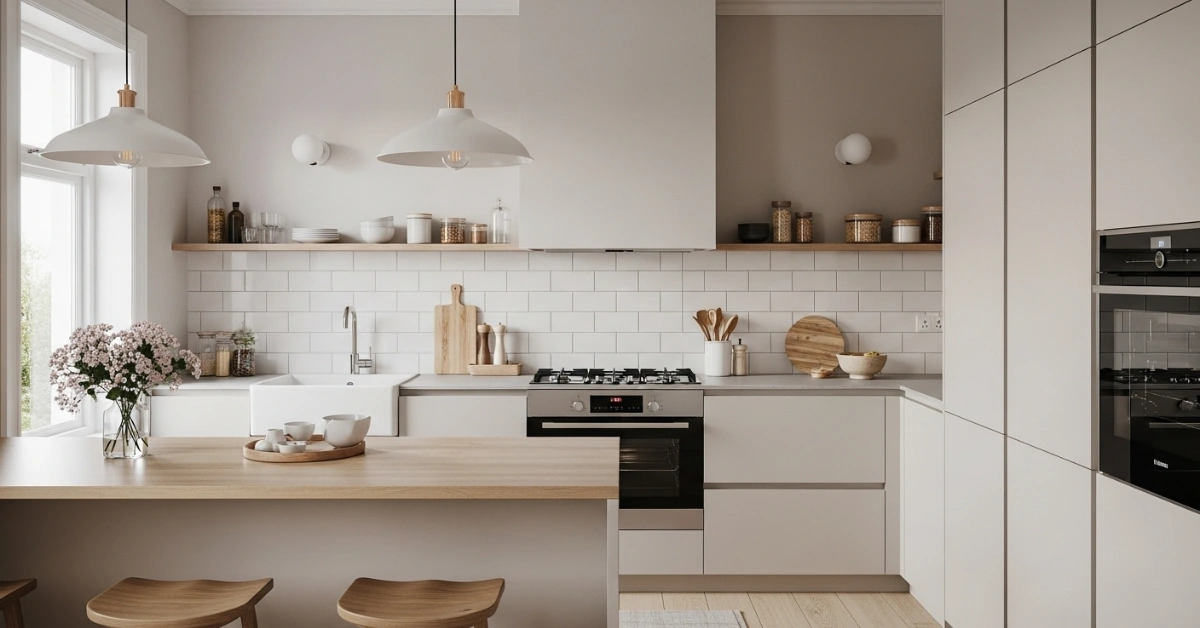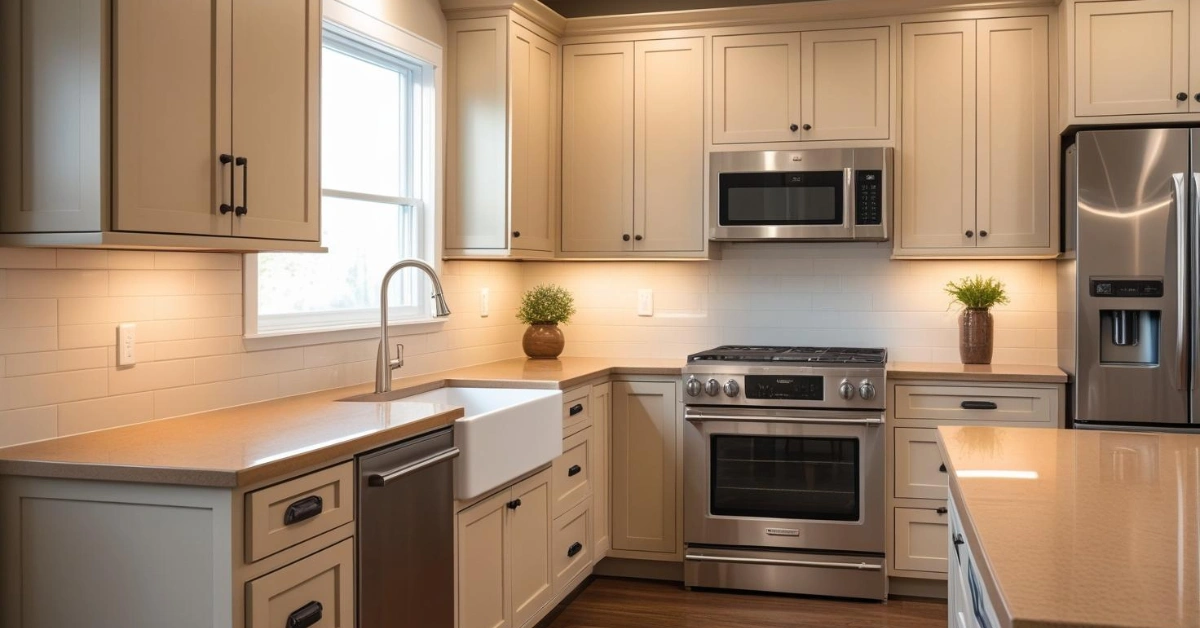19 Timeless Victorian Kitchen Design Ideas You Need To See

Are you dreaming of a kitchen that exudes timeless charm but still meets the demands of modern life? Many homeowners struggle to balance historical elegance with practical functionality, often ending up with spaces that feel either too dated or too sterile. A Victorian kitchen offers the perfect solution, combining intricate details, rich textures, and warm ambiance with the conveniences of today’s technology. In this comprehensive guide, we’ll explore everything you need to know to create a stunning Victorian kitchen, from authentic design elements to practical tips for blending old-world charm with contemporary needs.
Whether you’re renovating a period home or simply inspired by the opulence of the Victorian era, this article provides actionable ideas, expert insights, and design inspiration to transform your kitchen into a masterpiece. Let’s dive into the world of Victorian kitchen design and uncover how to bring this elegant style into your home.

What Defines a Victorian Kitchen?
The Victorian era (1837–1901) was a time of grandeur, innovation, and attention to detail, and Victorian kitchens reflect these qualities. Unlike the sleek, minimalist kitchens of today, these spaces were designed to be both functional and visually striking, often serving as the heart of the home. According to The Victorian Society, kitchens during this period evolved from utilitarian spaces to showcases of craftsmanship, especially in wealthier households where elaborate designs became a status symbol.

Key characteristics include:
- Ornate Details: Intricate moldings, carved woodwork, and decorative tiles.
- Rich Color Palettes: Deep hues like burgundy, forest green, and navy, paired with warm neutrals.
- Natural Materials: Wood, stone, and cast iron for durability and elegance.
- Symmetry and Balance: A focus on harmonious proportions and structured layouts.
Interior designer Jane Lockhart notes, “A Victorian kitchen is about creating a sense of warmth and nostalgia while ensuring every element serves a purpose.” This blend of beauty and utility makes the style appealing for modern homeowners.
Key Elements of Victorian Kitchen Design
To create an authentic Victorian kitchen, focus on incorporating these essential elements. Each contributes to the overall aesthetic while ensuring the space remains functional.
1. Cabinetry: The Backbone of Victorian Elegance
Victorian cabinetry is all about craftsmanship. Cabinets were often made from solid woods like oak, walnut, or mahogany, featuring raised panels, carved details, and antique brass or glass knobs.
- Design Tips:
- Choose cabinets with intricate moldings or glass-fronted doors for authenticity.
- Opt for a painted finish in cream, sage green, or charcoal for a period-appropriate look.
- Add crown molding to cabinets for a polished, high-end appearance.

Example: In a recent renovation of a 19th-century home, we installed custom oak cabinets with etched glass inserts, paired with brass handles. The result was a perfect blend of Victorian charm and modern storage solutions.
2. Countertops and Surfaces: Timeless Materials
Victorian kitchens favored natural materials like marble, granite, or butcher block for countertops. These surfaces were both practical and luxurious, aligning with the era’s emphasis on quality.
- Material Choices:
- Marble: Elegant and durable, ideal for baking stations.
- Butcher Block: Adds warmth and is perfect for food prep areas.
- Soapstone: A softer, matte finish that complements darker color schemes.
- Pro Tip: Pair marble countertops with a cast-iron sink to enhance the period aesthetic while maintaining durability.

3. Flooring: Classic Patterns and Textures
Flooring in Victorian kitchens often featured intricate patterns, such as black-and-white checkerboard tiles or encaustic tiles with geometric designs. Wood floors with rich stains were also popular in wealthier homes.
- Flooring Options:
- Ceramic Tiles: Use hexagonal or octagonal tiles for a classic look.
- Hardwood: Opt for dark-stained oak or walnut with a herringbone pattern.
- Encaustic Tiles: These add vibrant patterns and durability.

Expert Insight: Designer Sarah Thompson suggests, “Encaustic tiles are a fantastic way to add personality to a Victorian kitchen. Choose muted tones for authenticity, but don’t shy away from bold patterns to make a statement.”
4. Color Palette: Warm and Inviting Tones
Victorian kitchens embraced rich, moody colors that created a cozy yet sophisticated atmosphere. Popular hues included deep reds, emerald greens, and soft creams, often paired with gold or brass accents.
- Color Tips:
- Use a primary color (e.g., forest green) on walls or cabinets, with a neutral secondary tone (e.g., cream) for balance.
- Incorporate wallpaper with floral or damask patterns for an authentic touch.
- Add metallic accents like brass or copper for warmth.

Example: A homeowner in London used a deep navy blue for lower cabinets, paired with cream upper cabinets and gold hardware, creating a striking yet timeless Victorian kitchen.
5. Lighting: Statement Pieces with Function
Lighting in Victorian kitchens was both decorative and practical. Chandeliers, pendant lights, and wall sconces with intricate designs were common, often featuring glass or crystal elements.
- Lighting Ideas:
- Install a wrought-iron chandelier with candle-style bulbs for a dramatic focal point.
- Use wall sconces with frosted glass shades to add soft, ambient light.
- Place under-cabinet lighting to highlight countertops and improve functionality.

Pro Tip: Choose fixtures with aged brass or bronze finishes to maintain authenticity while ensuring modern energy efficiency.
Blending Victorian Style with Modern Functionality
One of the biggest challenges in designing a Victorian kitchen is balancing historical charm with modern conveniences. Here’s how to achieve a seamless blend.
1. Modern Appliances with Vintage Appeal
While Victorian kitchens relied on cast-iron stoves and open hearths, today’s homeowners need appliances that are efficient and user-friendly. Many brands offer retro-style appliances that mimic the look of the Victorian era.
- Appliance Tips:
- Choose a range with vintage-inspired details, like Smeg or AGA cookers.
- Opt for a farmhouse sink with a high-arc faucet in brass or nickel.
- Conceal modern appliances like dishwashers behind custom cabinet panels.

Example: In a recent project, we installed a retro-style refrigerator in cream, paired with a cast-iron range, creating a cohesive Victorian aesthetic without sacrificing performance.
2. Smart Storage Solutions
Victorian kitchens were designed for functionality, with ample storage for cookware and ingredients. Modern kitchens can incorporate these ideas with clever updates.
- Storage Ideas:
- Add a freestanding pantry with glass doors for a period-appropriate look.
- Use pull-out drawers inside cabinets for easy access to pots and pans.
- Install open shelving to display vintage china or copper cookware.

Expert Tip: “Maximize vertical space with tall cabinets or shelving units,” says designer Mark Evans. “This keeps the kitchen clutter-free while showcasing decorative items.”
3. Technology Integration
Modern technology, like smart lighting or touchless faucets, can enhance a Victorian kitchen without detracting from its charm.
- Tech Tips:
- Install dimmable LED lights that mimic the glow of gas lamps.
- Use smart thermostats disguised as vintage controls.
- Incorporate hidden outlets to keep countertops clean and uncluttered.

Victorian Kitchen Layout Ideas
The layout of a Victorian kitchen is crucial for both aesthetics and functionality. Here are three popular layouts inspired by the era:
1. The Classic U-Shaped Kitchen
This layout maximizes counter space and storage, ideal for larger homes. Place a central island or table for food prep and dining.
- Pros: Efficient workflow, ample storage.
- Cons: Requires a larger footprint.
- Best For: Families or avid home cooks.

2. The Galley Kitchen
A narrow, efficient layout with workstations along two parallel walls, perfect for smaller Victorian homes.
- Pros: Compact and functional.
- Cons: Limited space for multiple cooks.
- Best For: Apartments or historic townhouses.

3. The Open-Plan Victorian Kitchen
Blend the kitchen with a dining or living area for a modern twist on the Victorian aesthetic.
- Pros: Spacious and sociable.
- Cons: May require structural changes.
- Best For: Modern homes with a nod to history.

Example: In a restored Victorian manor, we designed an open-plan kitchen with a central island featuring a marble countertop and brass pendant lights, creating a seamless blend of old and new.
Decor and Accessories: Adding the Finishing Touches
The right decor can elevate a Victorian kitchen from beautiful to breathtaking. Focus on details that reflect the era’s opulence.
1. Backsplashes: Art in Tile
Victorian backsplashes often featured hand-painted or patterned tiles. Subway tiles, introduced in the late 19th century, are also a great choice.
- Backsplash Ideas:
- Use ceramic tiles with floral or geometric patterns.
- Opt for a classic white subway tile with dark grout for contrast.
- Consider a herringbone or chevron pattern for added elegance.

2. Hardware: Small Details, Big Impact
Brass or nickel knobs, pulls, and hinges add authenticity and shine to a Victorian kitchen.
- Hardware Tips:
- Choose bin pulls or cup pulls for a period-appropriate look.
- Mix finishes (e.g., brass and nickel) for a curated feel.
- Ensure hardware complements the cabinet style.

3. Textiles and Window Treatments
Victorian kitchens often included curtains or valances in rich fabrics like velvet or brocade.
- Textile Ideas:
- Use lace or floral curtains for a soft, romantic touch.
- Add a patterned rug in muted tones to warm up the floor.
- Incorporate upholstered bar stools with damask fabric.

Pro Tip: “Layer textiles sparingly to avoid overwhelming the space,” advises designer Emily Carter. “A single statement piece, like a floral curtain, can tie the room together.”
Common Mistakes to Avoid in Victorian Kitchen Design
Even with the best intentions, it’s easy to make missteps when designing a Victorian kitchen. Here are pitfalls to watch out for:
- Overloading with Ornamentation: Too many decorative elements can make the space feel cluttered. Stick to a few statement pieces, like a chandelier or patterned tiles.
- Ignoring Functionality: Ensure the layout supports modern cooking needs, with ample counter space and storage.
- Using Inauthentic Materials: Avoid cheap imitations like plastic laminates that mimic wood or stone. Opt for natural materials for authenticity.
- Poor Lighting Choices: Inadequate lighting can make a Victorian kitchen feel dark and cramped. Balance ambient, task, and accent lighting.
Example: A homeowner once installed overly ornate cabinet handles that clashed with the simple elegance of their marble countertops. Switching to understated brass knobs restored balance to the design.
Victorian Kitchen Inspiration: Real-World Examples
To spark your creativity, here are three real-world Victorian kitchen designs:
The Cozy Cottage Kitchen:
- A small Victorian kitchen in a countryside home featured cream cabinets, a butcher-block island, and black-and-white checkerboard flooring. Brass pendant lights added warmth, while a farmhouse sink tied the space together.

The Grand Manor Kitchen:
- In a restored 1890s mansion, deep green cabinets, marble countertops, and a wrought-iron chandelier created a luxurious yet functional space. Encaustic tiles on the floor added a pop of pattern.

The Urban Victorian Kitchen:
- A city apartment blended Victorian charm with modern minimalism, using navy cabinets, white subway tiles, and open shelving to display vintage copper pots.

Expert Insight: “Don’t be afraid to mix eras,” says designer Laura Bennett. “A Victorian kitchen can feel fresh and relevant with the right modern touches.”
Budget-Friendly Tips for a Victorian Kitchen
Creating a Victorian kitchen doesn’t have to break the bank. Here are cost-effective ways to achieve the look:
- Refinish Existing Cabinets: Paint or stain old cabinets in a period-appropriate color like sage green or cream.
- Shop Antique Markets: Find vintage hardware, lighting, or accessories at flea markets or salvage yards.
- Use Peel-and-Stick Tiles: Affordable alternatives to encaustic tiles can mimic the Victorian look.
- DIY Decor: Create your own curtains or upholstery with Victorian-inspired fabrics.

Example: A budget-conscious couple transformed their dated kitchen by painting their cabinets charcoal, adding brass knobs from a thrift store, and installing a peel-and-stick backsplash with a floral pattern.
Maintaining Your Victorian Kitchen
To keep your Victorian kitchen looking pristine, follow these maintenance tips:
- Clean Natural Surfaces: Use gentle cleaners on marble or butcher block to avoid damage.
- Polish Hardware: Regularly polish brass or nickel to maintain its shine.
- Protect Floors: Use rugs in high-traffic areas to prevent wear on tiles or hardwood.
- Inspect Appliances: Ensure retro-style appliances are serviced regularly for longevity.

Pro Tip: “Invest in quality materials upfront,” says designer Michael Reed. “They’ll save you money on repairs and replacements in the long run.”
Conclusion:
A Victorian kitchen is more than just a cooking space it’s a celebration of craftsmanship, elegance, and timeless beauty. By blending ornate details, rich colors, and natural materials with modern functionality, you can create a kitchen that’s both inspiring and practical. Whether you’re drawn to intricate tiles, statement lighting, or classic cabinetry, the key is to balance authenticity with your personal style.
Ready to transform your kitchen into a Victorian masterpiece? Start by selecting one or two elements, like a bold color palette or vintage hardware, and build from there. For more inspiration, consult with a local interior designer or explore antique markets for unique finds. Share your Victorian kitchen journey with us in the comments below, or contact a design professional to bring your vision to life!






